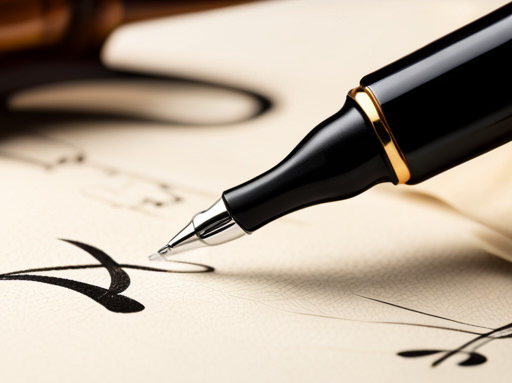Calligraphy has the power to transform ordinary greeting cards into elegant and beautiful works of art, leaving a lasting impression on the recipient. The intricate skill of calligraphy incorporates touch, pressure, hand movement, and flow, and while it may seem intimidating at first, there are resources available to help you master this craft. For instance, The Postman’s Knock offers a free greeting card calligraphy cheat sheet and worksheet that can alleviate any anxiety associated with creating calligraphic cards. By using the cheat sheet as a reference or for practice, you can improve your skills and feel confident when it’s time to work on an official project.

Using calligraphy in a greeting card can add a special touch and make it look more elegant and beautiful. Calligraphy is an art and skill that involves touch, pressure, hand movement, and flow. It can be intimidating to write greeting card calligraphy, but there are resources available to help. The Postman’s Knock offers a free greeting card calligraphy cheat sheet and worksheet that can ease any card-creation anxiety. The cheat sheet can be used as a reference to observe the calligraphy exemplar and the arrows/numbers, or as a practice aspect before writing the calligraphy on an official project.
When writing a greeting card, it is important to make guidelines to keep the writing clean and consistent. The usual style for birthday or greeting cards is Foundation Hand or Italic style. It is also important to choose a good quality card that does not allow the ink to run, bleed, or smudge your work. Using a good pen is also crucial to keep the writing clean. A felt tip pen or calligraphy pen is convenient and disposable, while a fountain pen is refillable and long-lasting. A steel point pen creates fine detail but needs replacement, and an old-fashioned quill pen is dipped in ink and cut off at an angle.
In conclusion, using calligraphy in a greeting card can make it look more elegant and beautiful. There are resources available to help with greeting card calligraphy, such as cheat sheets and worksheets. When writing a greeting card, it is important to make guidelines, choose a good quality card, and use a good pen to keep the writing clean and consistent.
Please note that if you purchase from clicking on the link, some will result in us getting a tiny bit of that sale to help keep this site going.

